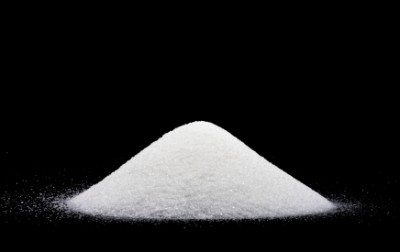Special edition: Prebiotics
Prebiotics: Misunderstood but not missing in action

It’s a minor conundrum but its answer may lie in the fact that many prebiotic ingredients are dual purpose – sold as much for their healthy bacteria-building potential as their starch and sugar replacement ability. Or to benefit gut health as fibres. Or as texturants.
End use aside, the big three – inulin, oligofructose and ploydextrose – are all forecast for growth by Euromonitor International in pure volume terms.
Ewa Hudson, the researcher’s head of global health and wellness research said global inulin volumes would double from 100,000 tonnes in 2009 to 200,000 tonnes in 2014. In the same period oligofructose would grow from 200,000 tonnes to 350,000 tonnes and polydextrose would show steadier growth from 80,000 tonnes to 85,000 tonnes.
“Prebiotics may not have the consumer recognition and appeal as probiotics, but in a way they are getting a probiotic boost because companies like Danone are adding them to products such as infant formulas,” Hudson said.
In Europe alone, Frost & Sullivan says prebiotic ingredients used exclusively in foods and beverages, not supplements, would surge from €295.5m in 2008 to to €767m in 2014, or 205,000 tonnes – a compound annual growth rate of 14%.
But these forecasts were made before the severity of the European Food Safety Authority’s rulings became apparent and may therefore be in need of some revision given the agency is yet approve a single purely pre- or probiotic claim to date.
Niche
That may be so, but according to branding expert Peter Wennstrom, president of the Healthy Marketing Team, the link consumers do have in their mind is about fibre and whole grains and that is natural, that is linked to heart and gut health, and that is driving their sales growth.
As some US analysts noted earlier in this prebiotics series, fibre is much more saleable in the present climate than prebiotics, whatever the end result health-wise.
“Prebiotics is confusing for consumers. Fibres are well known and wholegrain is too and bran is great so that is all good since consumers see them as the concentrated benefits of cereals like oat, rye, wheat etc,” Wennstrom said.
Analyst and editor Julian Mellentin agreed when he wrote in ’10 Key Trends 2011’: “…if you choose to use a term such as prebiotic – meaning a fibre that promotes the growth of beneficial intestinal bacteria – to describe the benefits of your product then this immediately positions you firmly in the early adopter market.”
“Anyone wanting to use the term prebiotic is going to have to take a long-term (decade-long) view of educating the consumer about what it means and what the benefit is…Prebiotic’s appeal will remain niche for some time to come.”
Over consumption?
The sector faces other challenges such as research suggesting certain ‘industrial fibres’ may be linked to health issues.
In Sweden this link gained prime time television news coverage and sparked a debate about the safety of certain fibres, and their over-consumption, something industry says is completely baseless.
Aside from the big three, other ingredients such as resistant starch, plant extracts and a range of polyols and sweeteners have won EFSA approvals that may indirectly influence the prebiotics market.
Claims not needed for growth
Leatherhead Food International principle market analyst, Jonathan Thomas, observed the digestive health ingredients market that included probiotics was growing, even as the EFSA rejections piled up.
“There have been many EFSA rejections and the consumers are sceptical but that has not stopped the market growing,” he said without fingering exactly why.
He said the global market valued at $245m in 2008 would be worth $500m in 2015, a typically conservative Leatherhead estimate that may not have fully factored in the rise of markets like China.
Highlighting how disparate some of these market estimates’ can be, Frost & Sullivan said the Chinese digestive health ingredients market alone was worth $273.6 million in 2009, of which 75% was prebiotics.
That would grow 22.4% per year to be worth $1.13bn in 2016. According to Frost, isomalto-oligosaccharide has the biggest share, in a 30-company domestic market dominated by Jiangmen Quantum Hi-tech, Shandong Baolingbao and Yunnan Tianyuanjian.
Product launches
Mintel data showed China was far and away the most active Asian market in product launches with 324 between 2006 and now. Next were Indonesia (91), Vietnam (70), India (39), Singapore (37), Thaliand (24), Malaysia (21), Australia (20), the Philippines (17) and New Zealand (16) giving a total of 688 launches over the 5+ years.
In 10 European countries over the same period there were 762 prebiotic debuts with the most launches in the UK (100) followed by Germany (92) and Spain (77). Next were the Netherlands (68), Italy (52), Russia (45), Austria (42), Poland (40), Turkey (34) and France (32).
In addition to gut health and immunity benefits, emerging clinical data suggests prebiotics can benefit the areas of cancer prevention, improved mineral absorption, weight management and satiety.















